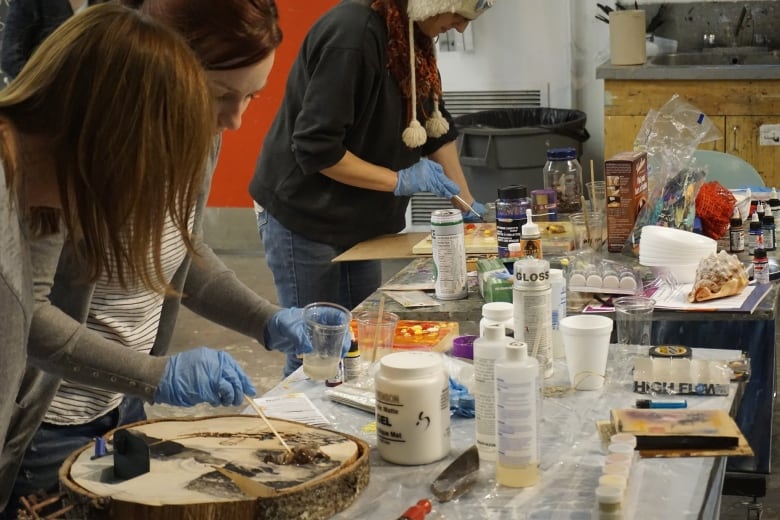Ontario artists are using their talents and unusual mediums to reflect Russian invasion of Ukraine | CBC News
Around the world, artists have been expressing their support for Ukraine as Russia continues to wage war in the eastern European country.
These artistic responses can be seen flooding social media, in traditional gallery spaces, or even in the streets and other public spaces.
In Ontario, Barbara Salsberg Mathews is one of many people who turned to a creative outlet after the Russian invasion began in February. The artist, based in Guelph, said she felt motivated by her concern for Ukraine to create a piece of art she calls Mad Vlad.
“My mother is a survivor of the Holocaust. Her parents were murdered when she was a child. So I feel it deeply the pain of what the people of Ukraine are going through, and the antidote really is kindness coupled with action,” said Salsberg Mathews.
Salsberg went on to describe the Mad Vlad artwork, which is made entirely out of food. It’s a medium she’s become quite familiar with more recently.

She started using food as a medium shortly after she was diagnosed with Parkinson’s disease, which has affected her dominant hand she generally uses for painting and drawing.
“Coupled with my mom’s background as a survivor of a war… and my own loss through my body movements with Parkinson’s, it makes me realize this is it. Life’s so precious, really. We should do something positive and use our time here to make the world a shade more beautiful. That’s what drives me,” she said.
Using materials like a rotting parsnip, hot sauce, and deli meats to create a portrait also has a tendency to grab the attention of audiences, Salsberg Mathews added.
“It makes them laugh. And then they are better able to look at the situation, the seriousness. And is it not so threatening initially,” she said, referring to her food series.
History repeats itself, and art imitates life
The artistic response to the war in Ukraine, and audience responses like the one described by Salsberg Matthews, comes as no surprise to art historian Kristy Holmes.
The associate professor at Lakehead University in Thunder Bay said looking through art history, there are countless examples of critical depictions of war, especially in 20th-century art in particular.

“Before the 20th century, a lot of the images that we have that are to do with warfare often glorify warfare and glorify the military and military victories. And in the 20th century, that’s something that changes,” said Holmes, who chairs the university’s visual arts department.
“I see a lot of parallels between avant-garde movements that were really focused on being critical of the war. And what’s happening now, as most of the artistic response is critical of this war and is also very empathetic in particular to the Ukrainian people.”
PHOTOS: Murals, graffiti and other art in support of Ukraine
The avant-garde movement is known for its bold and experimental art that pushes boundaries and creates change. Holmes said other examples of this genre have brought awareness to movements like Black Lives Matter, Missing and Murdered Indigenous Women and Girls, and other instances of conflict.
These artistic responses can help people take interest, or even lend to the better understanding of moments in history. Holmes said images sometimes have greater power over people and can serve as a great education tool.

This power is something Holmes sees her own students starting to harness, especially as they study art history and as events in Ukraine make their way into classroom discussion and lectures.
“There’s an important historical legacy of art and the power of art to get people to think in different ways, to be critical and that they’re part of that legacy,” she said.
“As practicing artists right now, they’re the ones that can do this, that have the power to kind of get people to see the world and see things differently and critically.”
For all the latest entertainment News Click Here

